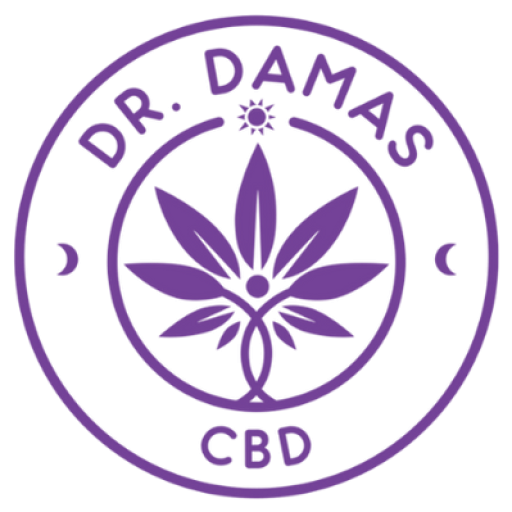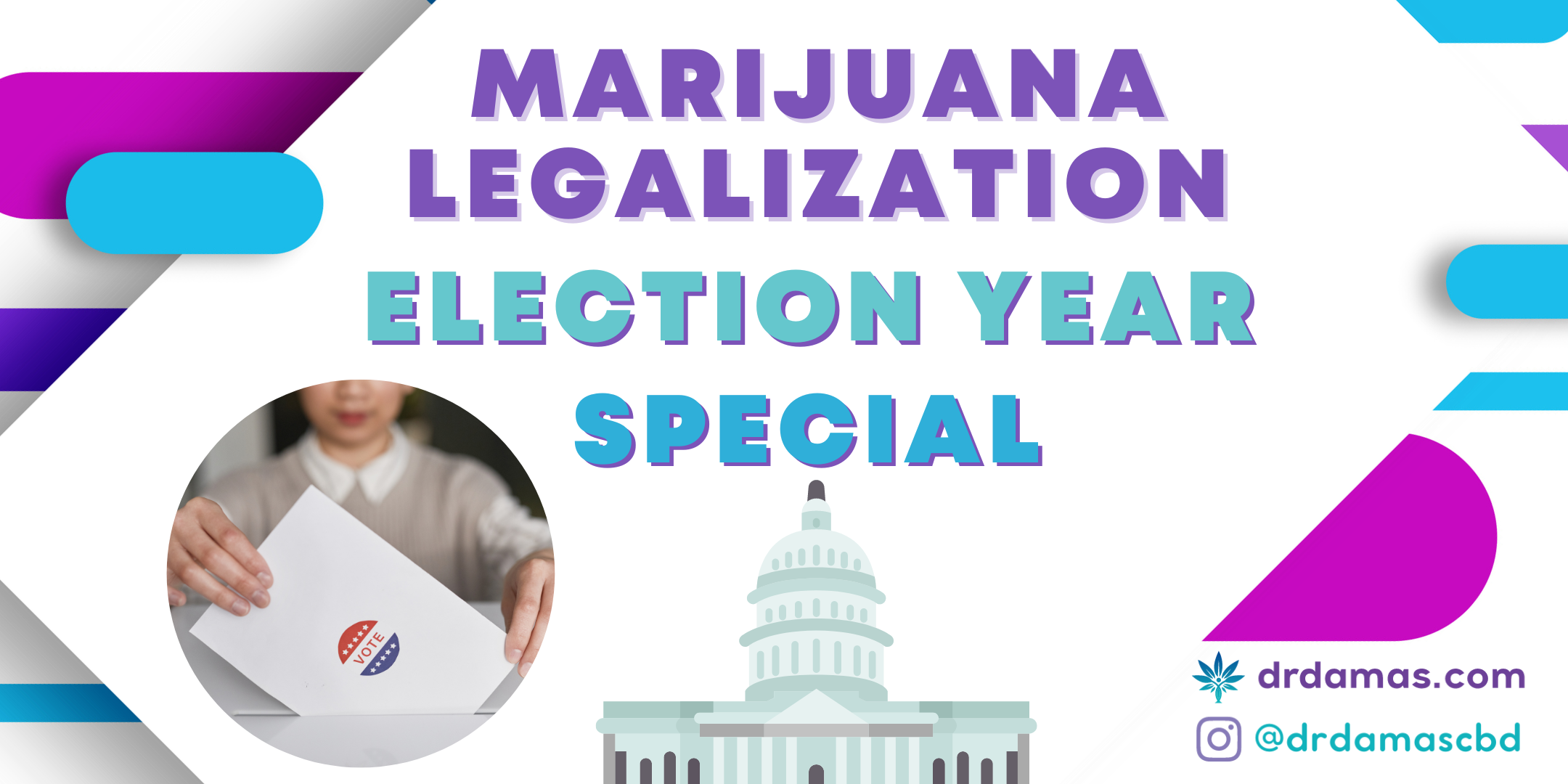Marijuana Legalization: Election Year Special
It’s 2024 and that means it’s a presidential election year and were all very excited ☹️. If you’ve been around for a little while, you’ve probably noticed a familiar pattern. This is the time of year where politicians push issues they think will drive people to vote for them or their party. We all know the usual suspects: immigration, taxes, abortion and guns. Recently we’ve had a new entry into the national conversation- Mary Jane. Over the years, she’s had many names: marijuana, cannabis, weed, reefer, hashish, zaza, laa, broccoli, lettuce, herb, buddha, cess and many more. All these aliases were necessary for her to work her way from the smoky back rooms she was relegated to back to the main stage where she belongs. Politicians can be very gifted showmen, and a smart showman learns to give the people what they want. And now, more than ever, the people are asking for their beloved Mary Jane. In fact, public support for marijuana legalization in the US has reached an all-time high, with approximately 70% of Americans favoring it according to a 2023 Gallup poll.
Ancient Remedy to Modern Medicine: Marijuana's Medicinal Past
Marijuana's use as medicine stretches back millennia. Ancient civilizations in India, China, and Egypt valued it for its pain-relieving, anti-inflammatory, and antiemetic properties. In the US, marijuana appeared in the United States Pharmacopeia (USP) from 1850 to 1942, listed for various ailments like nausea, pain, and muscle spasms. Examples of historical medicinal uses include:
Tinctures and teas: For pain relief, menstrual cramps, and anxiety.
Topical salves: For muscle aches and skin conditions.
Inhalations: For faster acting effects.
Major companies like Parke-Davis, Eli Lilly, and Squibb marketed various marijuana-based medicines until the 1930s, when the tide turned towards prohibition.
Pearls:
Queen Victoria reportedly used cannabis for menstrual cramps.
George Washington is said to have used it for toothaches (no mention if they were due to splinters)
The term "assassin" is derived from "hashishin," a Persian secret order who reportedly used cannabis for religious rituals. Curiously, scholars argue that this term may have been used by their enemies as a pejorative.
Enter Harry Anslinger and the Reefer Madness Era:
Fueled by xenophobia and personal ambition, Harry Anslinger, the Federal Bureau of Narcotics commissioner, launched a relentless smear campaign against marijuana. Despite lacking scientific evidence, he exaggerated its dangers, linking it to crime, violence, and societal decay. His propaganda film "Reefer Madness" further cemented these harmful stereotypes in the public imagination.
The War on Drugs and Marijuana's Convenient Inclusion:
In the 1970s, President Nixon declared the War on Drugs, a broad campaign targeting various substances, including marijuana. Despite the Nixon administration's own report acknowledging its minimal harm, marijuana became conveniently entangled in this war, further solidifying its Schedule I status under the Controlled Substances Act (CSA).
Key Players and Legislation:
Harry Anslinger: The architect of anti-marijuana propaganda and architect of the Bureau of Narcotics.
Marihuana Tax Act of 1937: Effectively banned marijuana nationally, despite objections from the medical community.
Boggs Act of 1952 and Narcotics Control Act of 1956: Introduced mandatory minimum sentences for drug offenses, disproportionately impacting minority communities.
Controlled Substances Act of 1970: Classified marijuana as a Schedule I drug, hindering research and access.
Pearls:
The Nixon administration's own study, the Shafer Commission Report, concluded marijuana should be decriminalized, but Nixon suppressed the report.
The term "reefer madness" itself is a fabrication, as marijuana does not induce the violent outbursts depicted in the film.
“We Have Reasonable Suspicion to Ruin Your Life”
Marijuana prohibition's consequences have been far from equal. Despite similar usage rates across racial groups, Black and Latino people are:
3.6 times more likely to be arrested for marijuana possession than white people (ACLU, 2020).
Disproportionately represented in marijuana-related incarcerations, despite lower rates of use (Drug Policy Alliance, 2023).
This disparity stems from discriminatory policing practices and sentencing laws, leading to mass incarceration and its devastating consequences for communities of color.
Pearls:
The ACLU estimates the War on Drugs has cost the US over $1 trillion, with Black and Latino communities bearing a disproportionate burden.
A 2020 study found Black people are 3.6 times more likely to be arrested for marijuana possession than white people, even though they use marijuana at similar rates.
Planting Seeds of Change: From Medical Marijuana to Legalization
Public sentiment towards marijuana has shifted dramatically in recent decades. Medical marijuana programs emerged in the 1990s, chipping away at the stigma and paving the way for broader acceptance. This shift reflects:
Growing awareness of marijuana's potential benefits for various medical conditions.
Recognition of the harms of prohibition, including mass incarceration and criminal justice disparities.
Shifting social values regarding individual liberty and government regulation.
Mile High and Golden: California and Colorado Light it Up
In 1996, California became the first state to legalize medical marijuana. The first major blow to the federal cannabis prohibition policy. In 2012, Colorado became the first state to legalize recreational marijuana use, sparking a cipher that would spread across the nation. Since then, 40 states, two territories and Washington DC have some sort of legalized marijuana program.
Pearls:
Colorado's legal marijuana industry has generated over $10 billion in tax revenue for the state
California now regularly rakes in more than $1 billion per year in marijuana tax revenue.
You Said Hemp? Is that Weed? Looks Like it…
The 2018 Farm Bill (which I discussed on CBS Miami) removed hemp, a low-THC cannabis variety, from the Controlled Substances Act, opening doors for its cultivation and commercialization. This distinction between hemp and marijuana, though crucial, is often misunderstood, creating confusion in the public discourse.
Hemp: A Versatile Plant Beyond THC
Hemp offers a diverse array of industrial and commercial applications, distinct from its psychoactive counterpart:
CBD (Cannabidiol): This non-psychoactive compound has gained immense popularity for its potential therapeutic benefits, including:
Pain relief: Studies suggest CBD may help manage chronic pain conditions like arthritis and neuropathy.
Anxiety and depression: Research indicates CBD may alleviate symptoms of anxiety and depression.
Seizure disorders: Epidiolex, a CBD-based medication, is FDA-approved for treating two rare forms of childhood epilepsy.
Hemp Fibers:
Textiles: Strong and durable, hemp fibers can be used for clothing, upholstery, and industrial fabrics.
Building materials: Hempcrete, a biocomposite made with hemp fibers and lime, offers sustainable and insulating construction materials.
Bioplastics: Hemp fibers can be processed into biodegradable plastics, reducing reliance on fossil fuels.
Hemp Biomass:
Animal feed and bedding: Hemp protein provides a nutritious and sustainable alternative to traditional animal feed sources.
Biofuel: Hemp can be converted into ethanol or biodiesel, offering renewable fuel options.
Paper and pulp: Hemp fibers can be used for high-quality paper production, reducing deforestation.
Pearls:
Hemp was once the primary source of fiber for canvas sails and ropes, used by historical figures like Christopher Columbus and George Washington. Hemp was also once the primary source of fiber for sails and ropes in the US Navy.
The first American flag was likely made from hemp fiber, not cotton.
The global CBD market is expected to reach $23.6 billion by 2025, highlighting its growing economic potential.
Unlike THC, CBD does not produce a "high" and is generally considered safe for most adults.
Prohibition's Perpetuation: Feeding the Black Market
Despite legalization efforts, the black market for marijuana persists. This is primarily due to:
Federal prohibition: The Schedule I status creates barriers, limiting legal supply and driving consumers to the black market.
Unequal access: Not all states offer legalization, and existing programs may have limitations or disparities.
Social stigma: Residual stigma and fear of criminal justice involvement can deter people from legal options.
Presidential Positions: A Spectrum of Views
Recent presidents have held varying stances on marijuana legalization:
Bill Clinton: “Didnt inhale”, also got impeached for getting a lil sumthin sumthin in the white house.
George W. Bush: Drank and did cocaine. Also, “Doesn't care about Black people”
Barack Obama: Advocated for decriminalization and reduced sentences, also known as giving “lip service”. Smoked mad L’s back in the day.
Donald Trump: Left the issue largely to states, but appointed anti-legalization officials. On trial for insurrection, sexual assault and fraud. Also seemingly covered in Teflon.
Joe Biden: Supports decriminalization and expungement of marijuana convictions, but hasn't pushed for full legalization. Once a big proponent of a crime bill that sent millions of black and brown people back into slavery/ incarceration. Also wants your vote in return for full legalization.
Pearls:
President Nixon's personal dislike of marijuana is believed to have played a significant role in its federal criminalization.
In 2022, President Biden announced a pardon for all federal marijuana possession offenses.
Wrappin it All Up
Of all the things that people have to consider when choosing whom to support at the ballot box, it makes sense that Mary Jane could make or break a candidate. Given the way marijuan prohibition has impacted society through policing, incarceration, “justice” system, health outcomes, tax revenue and economic potential it’s impossible to ignore how impactful she is. This year when voting, consider how your candidate treats Mary Jane because hell hath no fury like a woman scorned.
Pearls:
The term "marijuana" is believed to be of Mexican origin, possibly derived from the Nahuatl word "malhua” or similar."
The US is the largest producer of illegal marijuana in the world.
Uruguay became the first country in the world to legalize recreational marijuana in 2013.
The global legal cannabis market is projected to reach $39.4 billion by 2026.















